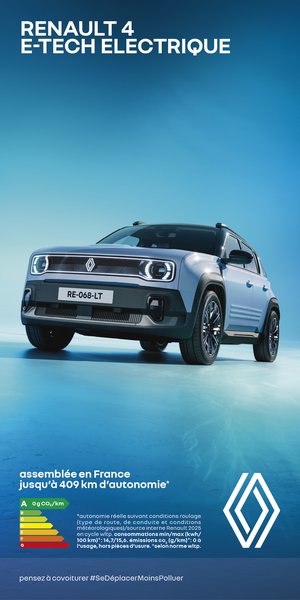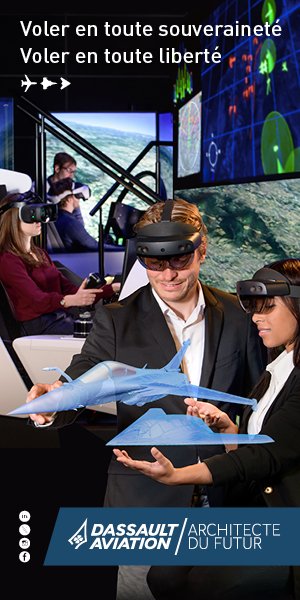
Politique Internationale — The importance of artificial intelligence (AI) in the automotive industry has been talked about for some time now. Is this a real revolution for the industry? And does the rise of electric vehicles make the issue of AI even more pressing?
Luc Julia — AI is the result of an evolution that began about seventy years ago. In a world like Silicon Valley, companies have long been familiar with this technological change. In industry, particularly for century-old car manufacturers, the phenomenon is more recent. So much so that the emergence of generative AI can be experienced as a real revolution. Nevertheless, these manufacturers are not just discovering the primacy of the technology either. In fact, they were already doing a bit of AI without knowing it. For example, the robots in the Renault Group factories and their role in predictive maintenance. In any case, if we really want to set markers over time, AI has been impacting the entire automotive industry chain for two or three years.
Electric vehicles facilitate the use of AI even further, simply because we need electricity to power the on-board computers – computers that are increasingly powerful and energy-consuming.
P. I. — What will AI bring to electric vehicles? And in what areas: vehicle design, manufacturing, operation, maintenance? Does it make sense to think step by step?
L. J. — I mentioned the whole manufacturing chain. In terms of “white collar” activities – to use the accepted terminology – AI- related tools will provide invaluable assistance: in design, for example, where we love bouncing ideas of each other, we’ll be able to explore a host of avenues, including the most mind-boggling. In electric vehicles, aerodynamics is a key design consideration, and AI can be a great help. In a field like testing, AI enhances wind tunnel capabilities. In marketing, approaches to the general public are being developed exponentially. And what about creativity in general? AI offers tremendous scope for expression.
Of course, blue-collar workers are not left out: if you enter a factory, you’ll find that painting jobs are optimized, with a dexterity rarely achieved when using spray guns. Quality control also benefits fully from AI: steps are carried out faster, and even more thoroughly. And let’s not forget parts cutting, where ultra-precision has become the norm. Whether white-collar or blue, this range of tasks is far from exhaustive. AI is literally everywhere.
P. I. — You say that AI is everywhere, but are some facets of a vehicle more affected than others?
L. J. — We usually distinguish between the exterior and interior of a vehicle. The exterior includes driving aids. AI enhances a number of safety systems, such as braking. Inside the vehicle, in the cockpit, AI does not set up a coercive framework, in the sense of forcing the driver to comply with a series of processes; on the contrary, it will do its utmost to adapt to the driver and offer him or her a personalized environment. This takes many forms: listening to music or providing certain working tools. In this way, AI enables a vehicle to become an extension of the home or office. And this is no mean feat.
Still in the cockpit, and if we return to driving, AI presents itself as a guarantee of efficiency, in both proactive and reactive modes. In proactive mode, it pushes the driver to make decisions: for example, if the driver exceeds an authorized speed limit, it encourages him or her to brake. Without the tone, moreover, being that of an argument. In reactive mode, a more immediate danger is identified and the AI provides a solution to quickly counter the threat. In both proactive and reactive scenarios, contact with AI is via a human voice: this capacity for contact ensures a precise response; the driver is not obliged to ask themselves a thousand and one questions.
P. I. — At this stage of development, we’re closer to a computer on wheels than a traditional vehicle...
L. J. — AI makes it possible to have a computer on wheels. Mind you, there’s nothing magical about that. AI is not an abstract system. It’s a set of tools whose development has required skills, exchanges and calculations. To sum up all these contributions, we speak of the software-defined vehicle (SDV), which means that it is a constantly evolving object. In the past, once a new model had been designed and launched on the market, it was allowed to live out its life. SDV is a complete break with the past: the aim now is for the driver to be able to reap the benefits of innovation as quickly as possible. Does this mean that a computer on wheels that requires so much dynamism and attention is the car of the future? I believe that the car of the future is, above all, a vehicle that is becoming safer and safer, and more environmentally friendly: all assets that are on the way to democratization, making it a vehicle accessible to the greatest number.
P. I. — How do drivers get to grips with the car? In the case of an electric car, isn’t the predominant role of AI an element of complexity?
L. J. — On the contrary, AI simplifies handling. Certain functions can be controlled much more naturally. As mentioned earlier, AI is a source of adaptations for the driver. But always with the imperative of maximum safety, so as not to use the vehicle beyond reason.
P. I. — Does the rise of AI make it necessary to recruit accordingly? With specific profile requirements?
L. J. — France stands out for its ability to train engineers. These are usually “Polytechnique” engineers, interested in a wide range of fields, capable of dealing with a wide range of disciplines and, in this case, likely to work in several industrial specialities. The Renault Group has made a point of including this type of profile in its workforce. Its engineers are neither disconcerted nor frightened by the rise of AI. They fundamentally see it as a source of added value. That doesn’t mean we can’t recruit talent trained primarily in AI, some of whose cutting-edge aspects require acute skills.
P. I. — What about working methods? In a booming segment like electrics, is AI generating new processes?
L. J. — The specific features of AI are its very essence, and it’s constantly evolving. Before the advent of AI, the project to launch a new car followed a fairly traditional framework, close to the so-called waterfall method (a sequence of linear and sequential phases), with a timeframe of four to five years. AI has turned this situation on its head: teams are now working on an “update” approach. In concrete terms, we need to be extremely flexible: AI offers opportunities for progress that we need to be able to integrate rapidly into our processes, without formalizing them to the extreme. On a day-to- day basis, this means greater flexibility. Certain professions are becoming more malleable, in order to integrate new horizons into tighter schedules.
In the early days, the understanding of AI was rather fragmented, with each department, branch or unit working on its own to integrate the technology. Those days are gone: thousands of people are now familiar with AI, with training programs that act as a real common core. This does not mean that we want to turn all our employees into AI specialists, but the solid foundation they can acquire is a major asset. Our industry has indeed become more complex than in the past, with the imperative of combining several dimensions to manufacture ever more efficient products. This is why Renault Group has created Ampere: an entity and teams dedicated to the smart electric vehicle.
P. I. — Today, the automotive sector is facing a dual revolution: that of electric cars on the one hand, and that of AI on the other. To what extent can these two technologies raise their level of performance?
L. J. — In the background, there’s also a third revolution, the environmental revolution, in which electricity and AI work together to support the ecological transition. To validate a level of performance, the balance of strengths and weaknesses is always a good exercise. As I said, AI and electric vehicles are ushering the automotive industry into a new era, with advances not only in the fight against global warming, but also in road safety and the optimization of industrial processes. But this comes at a cost: in addition to the investment needed to reorganize production lines, for example, both electric and AI vehicles require large quantities of specific materials, notably rare earths. We still need to find the right balance. At Renault, we’re working on this, in particular by piloting large-scale AI projects. For the time being, AI in industry is essentially based on local loops, another factor in favor of preserving the planet. Giving it an overall framework represents a major challenge, which we are currently addressing.



















